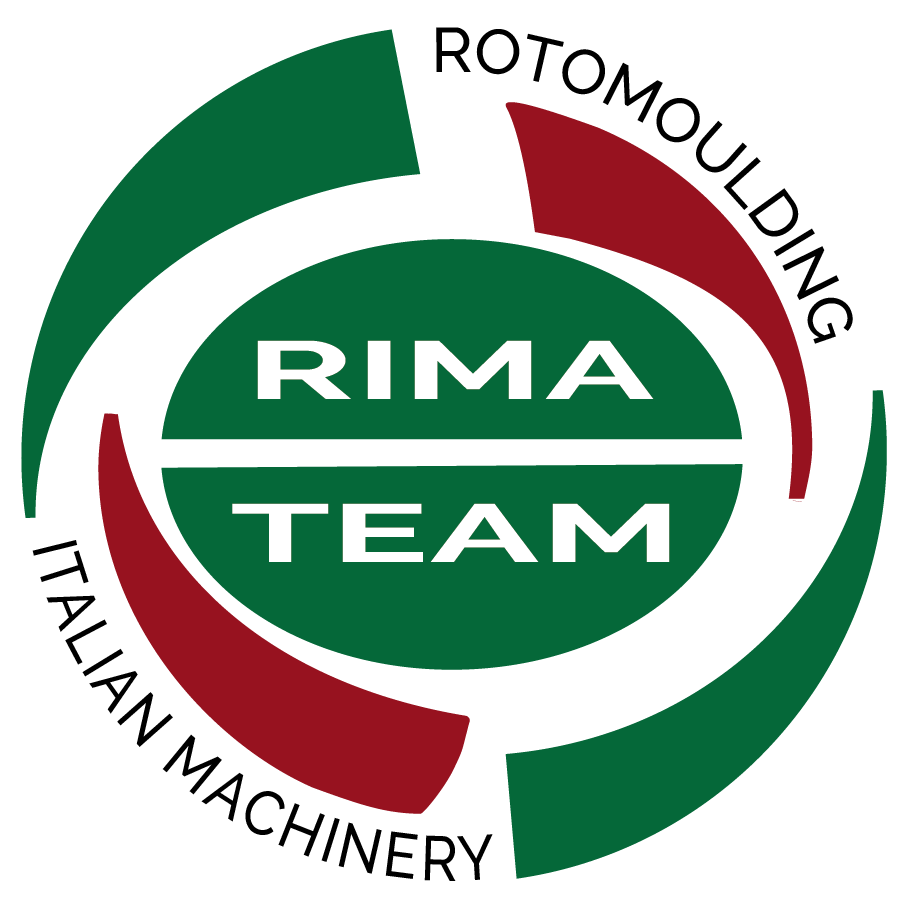ROTOMOULDING MACHINES AND ACCESSORIES
Rotational moulding is ideal technology for the production of objects with complex shapes and large dimensions.
RIMA-TEAM designs and manufactures various types of machines for rotational molding, which can be chosen by the customer based on the available installation space and production needs.
EXCELSA
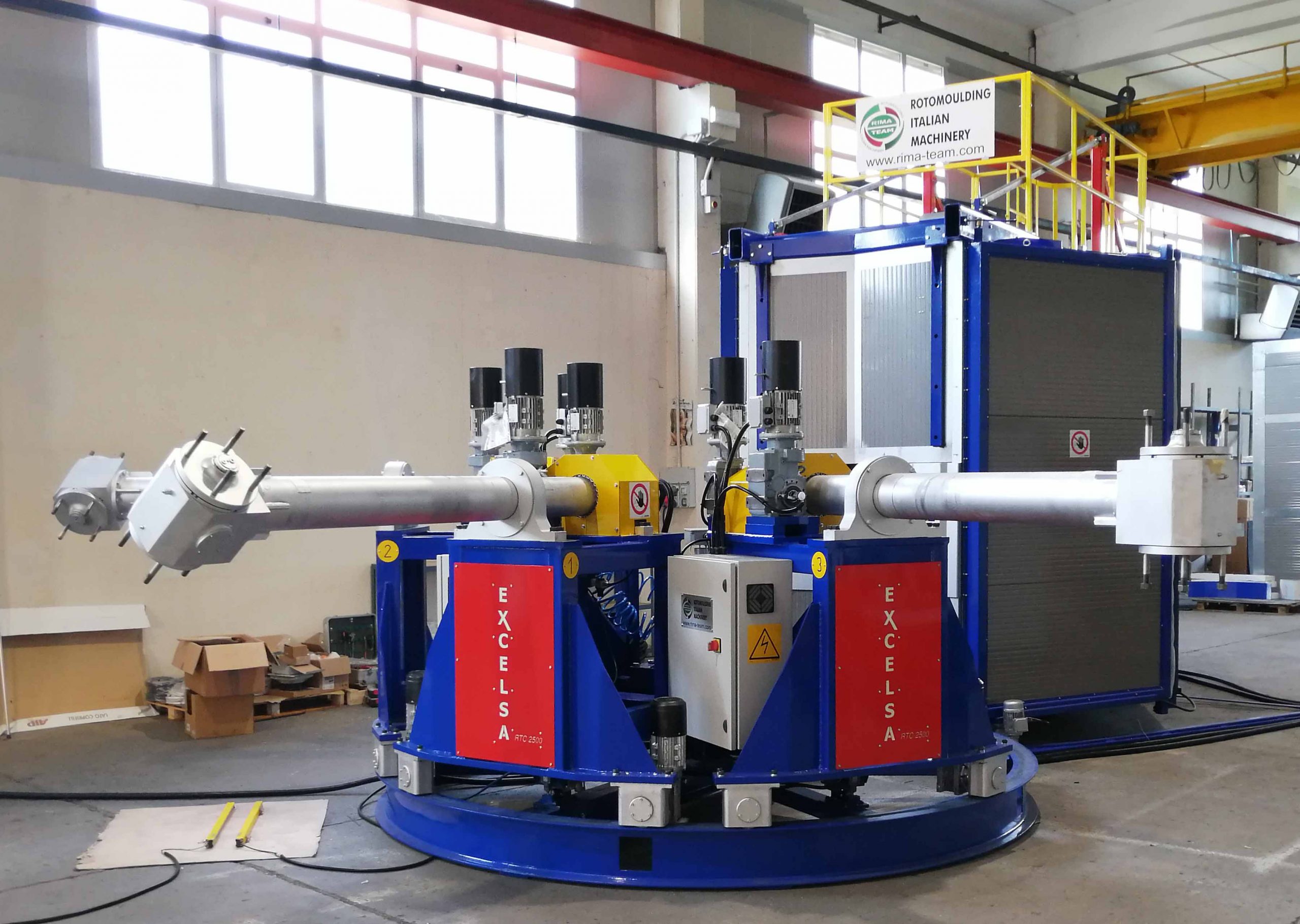
- RTC - Carousel Machine
- 2÷3÷4 independent arms
- Mould size from 1.500 up to 4.500 mm.
- Oven with digital burner
- Single or double cooling chambers
- Water mist/Air forced cooling
SUPREMA

- RSW - Rotoswing Machine
- 2 independent arms
- Mould size from 1.500 up to 4.500 mm.
- Oven with digital burner
- Convertible to a Carousel Machine
- Water mist/Air forced cooling
MAXIMA
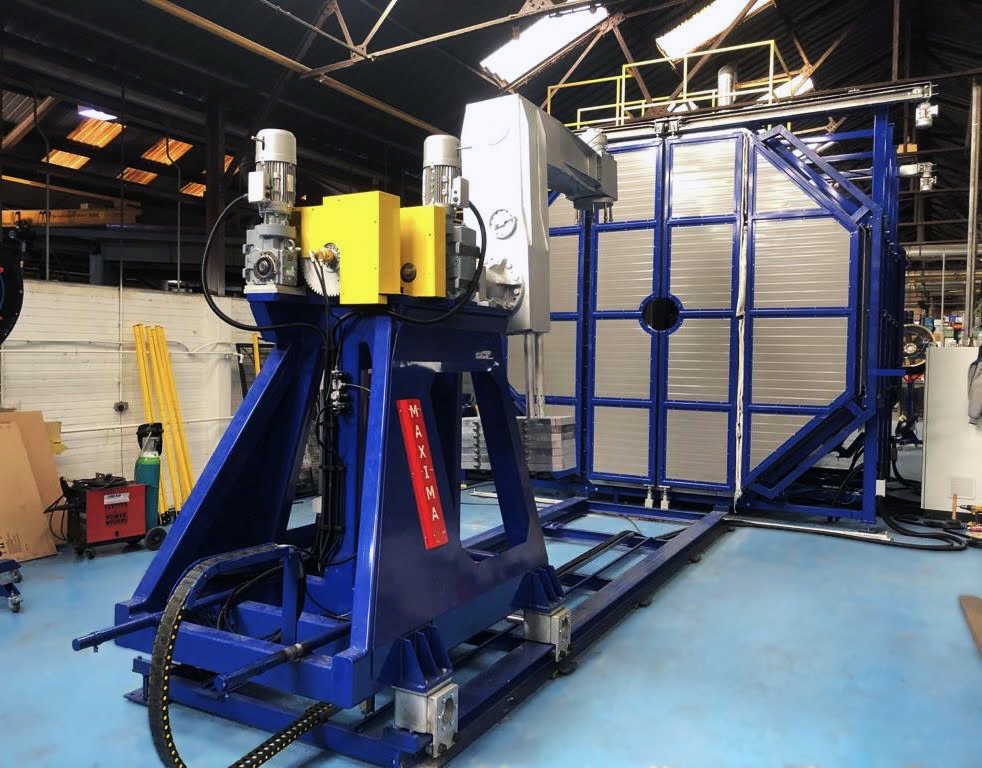
- RBS - Shuttle Machine
- 1÷2 independent arms
- Oven with digital burner
- Mould size from 2.500 up to 5.000 mm.
- Water mist/Air forced cooling
ACCESSORIES
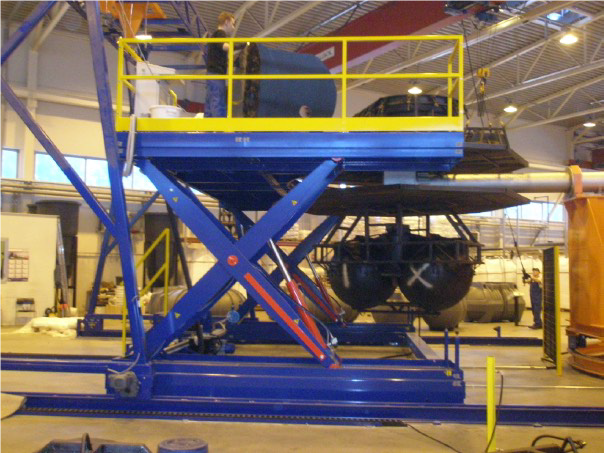
- Automatic platforms
- Manual platforms
- Gravimetric dosers
- Jib cranes
- Mixers
- and much more...
Regarding efficiency and cost reduction, what are the advantages of using a RIMA-TEAM rotational molding machine?
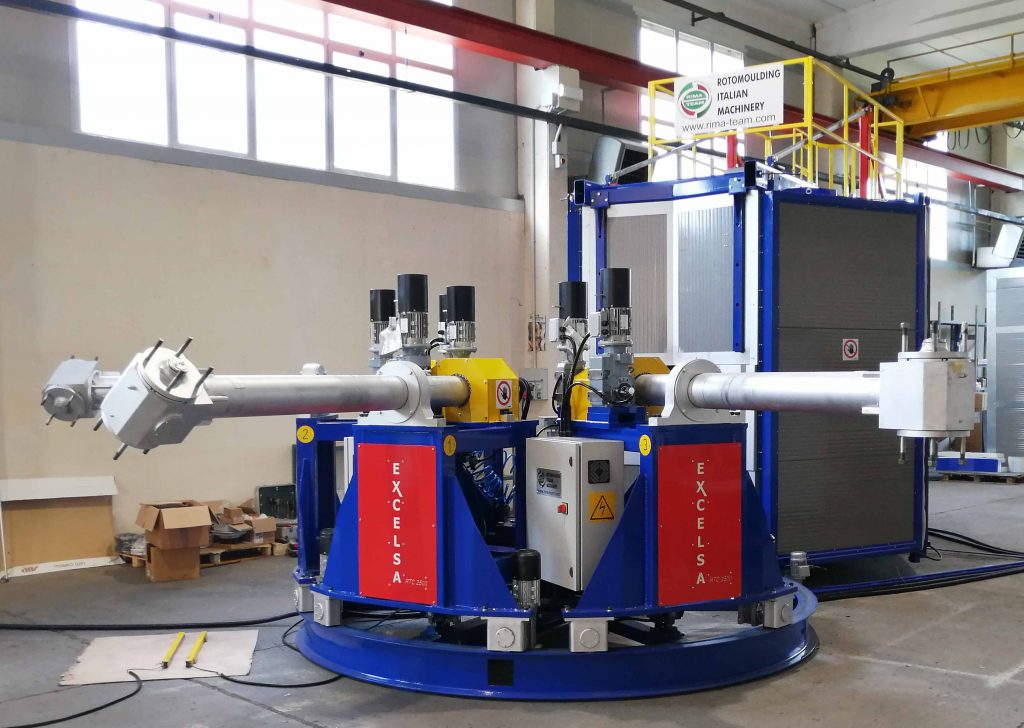
Efficiency in the rotational molding process, and thus optimal energy usage, also depends on reducing cycle times. This involves optimizing the material loading, heating, rotation, and cooling phases to achieve a faster production cycle.
The ability to accurately program the molding parameters, thanks to the SCADA solution developed by RIMA-TEAM technicians, helps reduce waste and maximize the utilization of raw materials.
RIMA-TEAM’s R&D department is constantly working on solutions to improve burner efficiency, heat distribution within the oven, thermal sealing of doors, along with various other innovations to facilitate maintenance and increase the longevity of both static and moving parts of the machine.
How is rotational molding born?
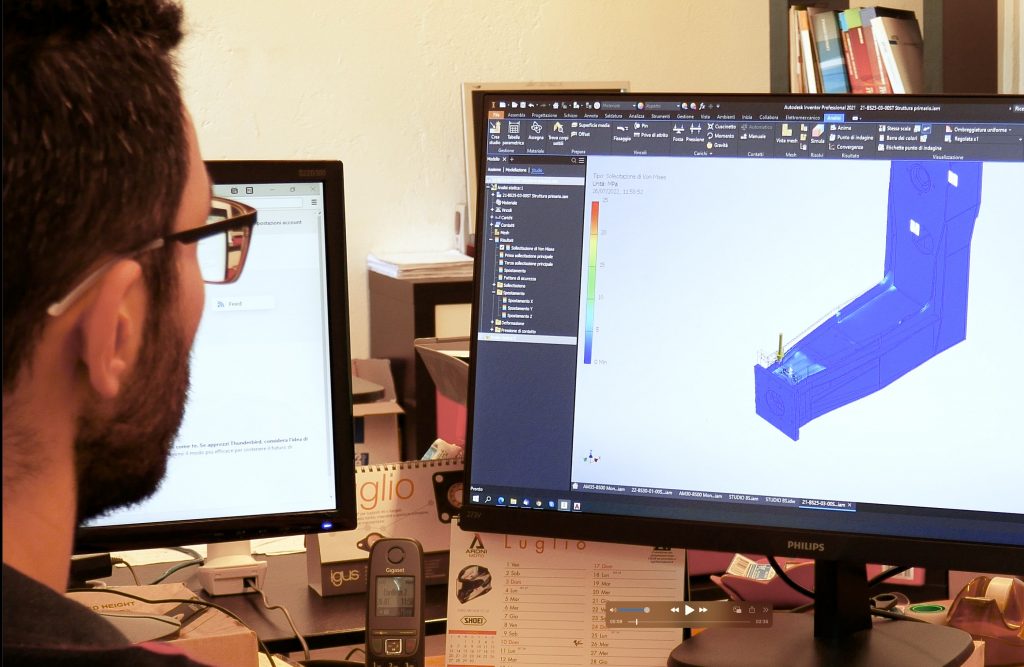
Rotational molding machines were conceived in 1955 by R. Peters, a british inventor, who developed the rotational molding process for the production of plastic objects.
This manufacturing method involves heating of plastics material inside a mold, which is then rotated to evenly distribute the molten material inside the mold. Once the plastic has solidified, the final shape of the product is extracted.
The rotational molding process is widely used for the production of large-sized objects such as tanks, containers, toys, and components for the automotive industry.
What does the maintenance of a rotational molding machine involve?
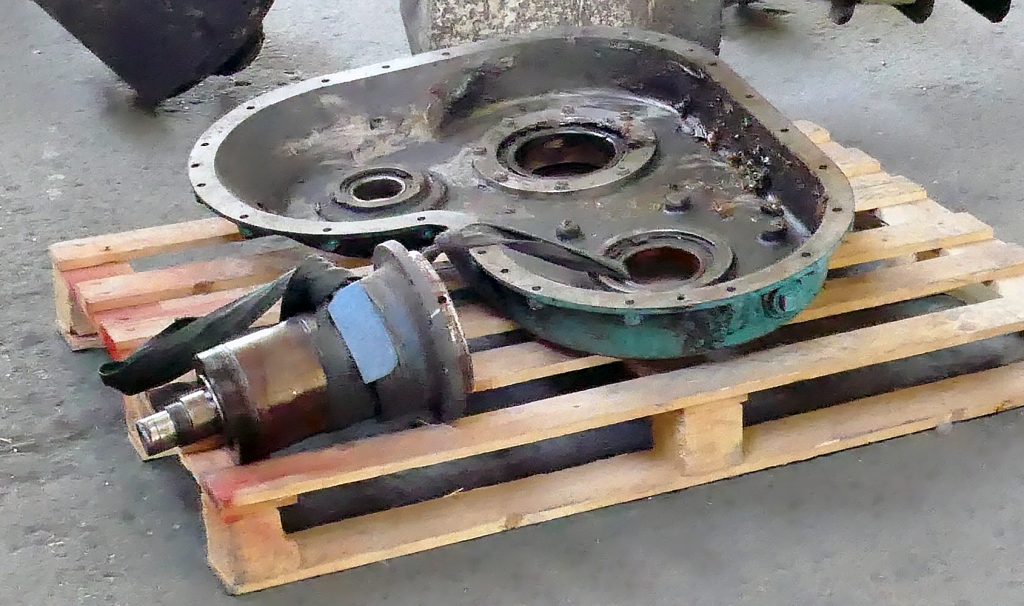
The maintenance of a rotational molding machine is a process aimed at keeping the machine in optimal operating conditions, preventing failures, and extending its lifespan.
In addition to regular machine maintenance, which includes cleaning the mold, rotating arm, and other machine parts to remove any plastic residues, dust, or dirt that may accumulate, it is important to follow the manufacturer’s instructions regarding checks on fastenings, types of lubricants to use, and lubrication frequency.
To ensure efficiency and reduce the possibility of medium-term failures, RIMA-TEAM provides its customers with instructions for scheduled maintenance and replacement kits for parts subject to wear.
What are the technical features to consider when evaluating a rotational molding machine?
The main technical features to consider when evaluating a rotational molding machine are:
- Mold size to be used, to determine the size of the rotating arm and the machine structure.
- Load capacity, indicating the amount of plastic material that can be loaded into the oven.
- Adjustable heating power of the oven to accommodate different materials and temperature requirements.
- Control system (SCADA) that manages and monitors process parameters, including programming functions, temperature monitoring, rotation speed control, and customizations.
- Safety devices, such as emergency stop systems, safety barriers, interlocking devices, and work condition monitoring systems, to protect operators and prevent accidents.
- Construction quality: The machines should be made with durable and resistant materials such as steel or special alloys, with a structure designed to ensure stability and precision during the molding process. The quality of materials used for friction-prone parts like bearings, hinges, sliding rails, etc., is also of particular importance.
- Machine footprint: RIMA-TEAM produces various types of rotational molding machines that can be chosen by the customer based on available installation space and production needs.
When is it appropriate to choose a rotational molding machine instead of an injection molding machine?
Regarding the production process, in injection molding, the plastic material is melted and injected into a high-pressure mold. The plastic rapidly solidifies inside the mold and is then extracted as the finished product.
In rotational molding machines, the plastic (either in particles or dust form) is poured into an empty mold, which is then rotated on multiple axes to evenly distribute the plastic material on the inner surface of the mold. The plastic is melted and solidified during the rotation process, and the final shape of the product is then extracted.
Injection molding is typically used to produce small or medium-sized objects, such as electronic components, containers, automotive parts and much more.
Rotational molding is more suitable for large-sized and complex-shaped objects, such as tanks, children’s toys, garden furniture, and heavy vehicle components.
In injection molding, molds are generally expensive to design and manufacture because they require high precision and strength to withstand the high injection pressures.
Molds used in rotational molding machines are generally less expensive, as they can be made from less robust materials since they do not need to withstand high pressures.
Rotational molding is therefore ideal for the production of objects with complex shapes, thanks to its ability to evenly distribute the plastic material on the entire inner surface of the rotating mold.
Rotational molding is also particularly advantageous for the production of large-sized objects. Rotational molding machines can handle significant mold sizes, enabling the production of tanks, industrial containers, and parts for the naval industry. This capability to work with larger sizes provides an advantage over injection molding, which is more suitable for small-sized objects.
